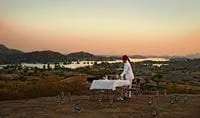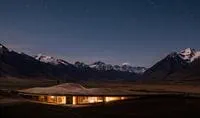Planning for great skiing - when, where and how?
Precious few days of the year are spent on the slopes, so here are some tips for getting the most out of your time skiing.

Dress right for the temperature (and the windchill)
- Above zero it will feel very warm in ski gear, so wear less layers or take a backpack so that you can remove them. Vented jackets and trousers and lightweight gloves are ideal and you can leave the thermals at the chalet. Don’t forget the sun-cream though
- Between zero and minus 8 degrees is ideal for skiing
- Below minus 8 degrees, you will want to be well togged up with multiple layers, thermals, thick gloves, goggles and a hat or helmet
- Below minus 15 skiing begins to become hard to enjoy for anyone. Facemasks, helmet liners, boot warmers
When to ski
- 90% of skiers will lunch between 12.30 and 14.00 – which ironically is often the best time to ski. Work around this and you can avoid crowds and get better service.
- If conditions are great, get first lifts, fresh tracks and sit down to eat by midday to ensure a second wind and a fast getaway -back on the slopes by 12.45
- In December and January, short afternoons mean skiing after lunch is usually cold and in poor light, so aim for an early start and ski hard until 1.45. Post lunch skiing is short-lived or non-existent!
- In spring conditions, have a lie in, a late breakfast and ski from 10 to 2 while the snow is at its best before settling in to a long lunch followed by a short ski to the après venue.
Mix it up and avoid “groupthink”
- Resist human nature when choosing where to ski. Everybody tends to ski the immediate area around the resort base on days 1 and 2, the next valley or two on day 3 and 4 before exploring the farthest reaches of the resort on days 5 and 6. By heading straight for the more obscure areas on days 1 and 2 before skiing closer to home, you may wonder where everyone went
- Saturday in the Alps is usually transfer day and quieter on the slopes so make this a big day to take a lot of lifts in main areas. In North America, weekends are busier and midweek quieter so this should be reversed
- Change your lunch and après-ski venues to ensure you visit different parts of the mountain
Altitude and orientation of the slopes – where to ski
- Snow quality varies hugely and orientation is more important than altitude. On your first day, get a feel for the quality of the snow at different altitudes and orientations – where it is soft and where it is cruddy or “baked”
- If temperatures have been well below zero since the last snowfall, the snow should be fresh everywhere. In this case, skiing should be good everywhere but south-facing slopes will be warmer and have better visibility
- If the temperature has risen above about minus 3 since the last snowfall, snow quality will be affected as freeze-thaw conditions result in sun exposed slopes melting during the day and refreezing from late afternoon onwards. In this case, if the day is going to be cold, seek out the more north-facing and higher slopes that are less affected. The ones that have seen the sun will be icy or crusty
- Even at times when it seems the whole mountain is icy or crusty, north-facing slopes, particularly steep or tree shaded ones can offer fresh snow – and orientation usually counts more than altitude
- On a warmer day, start with the east-facing slopes and work your way round to the south, west and north-facing ones so that you ski the slopes just as the sun hits them and they begin to thaw. The Americans call this “corn snow” and while timing it right is a black art, the skiing can be magical
Picking your lifts and runs
- If it is freezing, windy, or snowy, chairlifts can be a miserable, cold and wet experience. In these conditions, others will have given up and the shelter afforded by gondolas, cable cars and funiculars may be uncrowded
- On a sunny, warm day, head for the more far flung chair and even drag lifts to escape the crowds and work on your tan
- There is usually more than one way to the top and, on busy weeks, you may gain time by avoiding the queues to the gondolas and express chairlifts and heading for the less obvious and less modern lifts. Your chalet host will know them all by New Year!
- On white-out days, skiing can be incredibly frustrating as moguls and flat areas become invisible and you lose your balance. The tree-line usually offers visibility and it is well worth checking whether the top of the mountain is above the clouds
Call us on 020 8682 5050 to start planning your holiday
Why Scott Dunn?
Unique to You

- We listen to your travel goals and craft unique trips that are bespoke to you.
- We’re with you every step of your life’s travel journey, from honeymoons to family trips and beyond.
Seamless Service

- Global offices in the UK, US, and Singapore for 24/7 seamless service.
- We offer flexibility if your plans change so you can book with confidence and peace of mind.
Carefully Curated Collection

- We’ve curated an elevated collection of accommodation, experiences, and guides.
- Committed to fostering close global relationships to continue bringing you unique experiences.
Luxury in Every Sense

- We deliver a sense of luxury that matters most to you.
- Awarded Condé Nast Traveller’s Top Travel Specialists in the World 12 years in a row.
You are on our UK website
We noticed that you are in US and recommend that you explore our US website instead.
Or continue to explore our UK website





